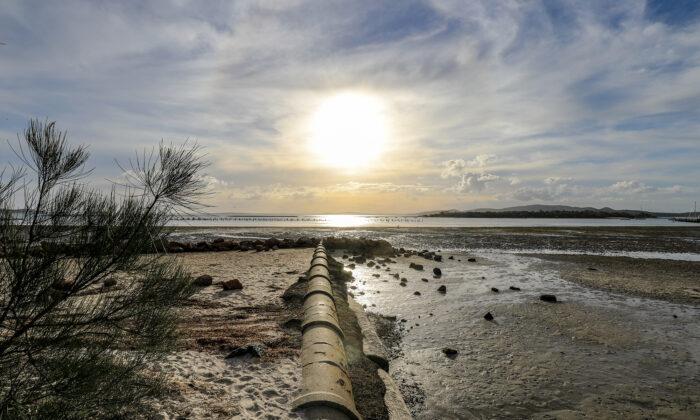In the summer of 2018, thousands of people around the world watched in horror as a video by an ocean protection organization showed a literal
wave of garbage crashing into the shores of the Dominican Republic. While you might think this debris came from the island itself, in fact, the trash could have come from countries thousands of miles away.
As the research project “
Plastic Adrift“ has shown, simple plastic bags washed off the coast of New York can end up being carried all the way to London by strong ocean currents in just three years.
What can be done about preventing plastic from getting into rivers and washing out to the sea? A beachside town in Western Australia, Kwinana, has come up with an ingenious solution that’s been around for thousands of years: nets.
The answer seems to come straight from the old proverb “prevention is better than a cure.” By attaching nets around stormwater pipes or culverts, massive amounts of plastics and other debris that would normally wash into the ocean and then onto beaches are easily captured.
While the nets, which Mayor Carol Adams described in an interview with the radio show
Perth Tonight as looking “like big socks,” catch almost all the trash from residential areas, they allow rainwater to wash on. Not only do they help collect trash and keep it from flowing onward, but they also help prevent flooding by stopping garbage from plugging drainage pipes.
The first experiment was wildly successful, catching loads of trash from residential and commercial areas. The amount they picked up from just two nets in a short span of time was both disturbing and heartening for a relatively small population of 39,000 according to
The West Australian, “During the trial, 370kg of debris consisting of food wrappers, plastic bottles, sand and tree leaves was cleaned out.”
After seeing the success of the nets, the town decided to install them all over the area at a price of AU$20,000 (approx. US$14,000). Mayor Adams felt the expenditure was entirely justified by the results. The nets show “how important it is for Government at all levels to really start to focus on environmental initiatives such as these and realize that small actions can have big impacts.”
What happens when the nets fill up? A small crane is used to lift up the nets and dump the contents into a truck that goes on to a disposal center where the waste is sorted. Anything that can be recycled is kept, and the rest is sent to the landfill.
The idea is catching on elsewhere. Originally developed in Australia, the
Bandalong Litter Trap has been brought to the United States by Storm Water Systems in Cleveland, Georgia. Rather than using nets or fencing, which can inadvertently catch fish and other wildlife, the trap floats at the surface, catching garbage inside a metal frame.
All of these traps, whether big or small, simple or complex, save time, money, and the environment. Rather than spending lots of money and labor to collect trash after it has been dispersed into the oceans or washed in bits and pieces on beaches, these solutions stop the problem before it starts.
Watch the video:





Friends Read Free